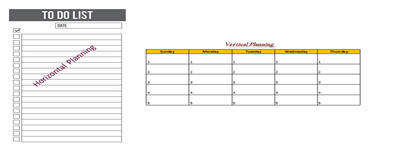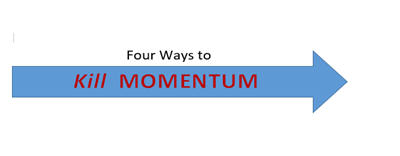How to Get More Done Each Day
Yogi Berra, Hall of Fame baseball player and coach, once commented upon arriving late to an event: “We were lost but we were making good time!” It really doesn’t matter how fast you are moving if you are not closing in on your destination. Leaders deal with details, problems, and people day in and day out. How can you maximize your work each day to be more productive while getting home for dinner on most nights? It is not always a matter of working harder. Sometimes you need new tools to work smarter. That brings me to this question: What is your method of time-management and task-management?
First, if you don’t have a system that may be your problem. Second, if you have a time-management system and fail to have a task-management system, you will head in the right direction but you will be much slower in getting there. Here are five ideas to improve your task-management on workdays (I use it every day) that will help you get more done:
- Make a daily “to-do” list. Don’t tune me out yet, just because that sounds too obvious. The list can be on a piece of paper, in a time-management notebook, on your computer or tablet, or in my case as part of your Microsoft Outlook dashboard. You are more likely to get things done if you write them down and check them off. You are less likely to leave something undone or to miss a deadline when a task is written down. As elementary as it seems, make a list each day. Ideally, make it at the end of the day and have it waiting for you in the morning.
- Make your “to-do” list horizontal instead of vertical. A vertical list would be represented by everything you need to do this week…or this month. You look at 50, 60, 70 items in front of you and immediately discouragement sets in and you feel tired before you even begin. A horizontal list is different. I make a different list for every day. Again, technology makes this easier if you use it but a piece of paper will do. Instead of looking at 70 things I need to do, I look at 12 for Monday, 10 for Tuesday, 15 for Wednesday, etc. I only have 5 for Friday with built in time to catch up or knock off early if everything is up to date. [Note here: Don’t get distracted by the “number” of items I suggested. This is for illustration only. One person might have four longer tasks for the day while another has over 30 shorter ones. It all depends on what your job assignment is.] I see my list of 12 items on Monday and I knock out 8 of them by early afternoon. I feel like I’m on a roll. The horizontal list gives me momentum and I do not feel overwhelmed. However, if I get distracted and only finish 10 of 12 items by the end of the day, no problem. I saved the less urgent items for the end. I roll one over to Tuesday and another over to Thursday.
- Begin the day with the “quick and easy items ” I have 12 things on my list. One of them will take four hours. Five of the items can all be done within an hour. I start with items each day that takes five to ten minutes or less no matter where they fit with my priorities. Within 90 minutes of each a day I feel like I am being productive because I cut deep into my list quickly. Some would argue you tackle the toughest task first and get it out of the way. You choose. You know yourself better than anyone else. Do what works best for you.
- Take five minutes to save hours by prioritizing the list at the beginning of the day. Suppose I have 12 items on my “to-do” list. The first thing I do in the morning is to give them a You can use letters, numbers, or colors. Let me use letters as an example. I will put an “A” beside every item that must be done today before I leave my office (barring an extreme emergency). I place a “B” beside items that must be completed before the weekend, even if they do not get done today. I place a “C” beside items that can wait another week in a pinch. Here is how I proceed: First, knock down a few “quick and easy” tasks no matter how they are coded. Next, work on items that are labeled “A” and must be done today. I almost always have these done prior to lunch. Next, work hard to get all of the “B’s” done since my weekend will be interrupted if they do not get done. When I get to my C’s, I am working in a very relaxed way.
- Build in time for interruptions. When you are working on your calendar (i.e.: time-management), do not schedule yourself “bell to bell.” Build in time for interruptions, unexpected calls, emergencies, etc. Another way to look at it: If you have an eight hour workday (which would be highly unusual for a leader), only schedule six and a half hours of meetings, ministry, or tasks on your “to-do” list. Otherwise, you will miss dinner once again.
I gave you a snapshot of the way I manage my tasks via a “to-do” list. People tell me I am productive, and I do tend to get a lot done. I write an article every Wednesday (like I am doing now) and check it off of my list. The article will not be released until Monday. If I had been distracted by some urgent matter, I would still have Thursday, Friday, Saturday, or Monday to write. My sermon is done for Sunday (I am a preacher), I am prepared for an Executive meeting on Thursday and Friday, and Saturday I am on schedule to hang out with the family for blessed leisure time. What is your system? You need one to maximize your leadership!










